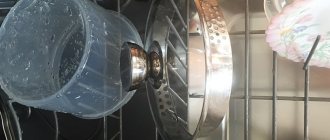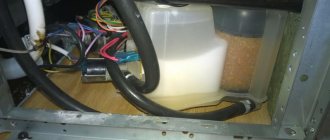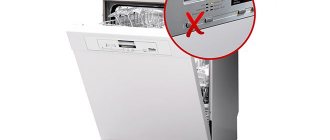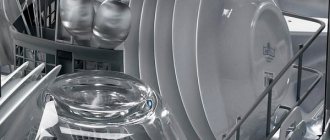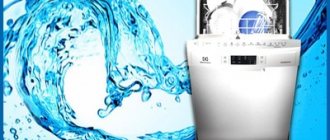Modern household appliances allow people to keep their home clean and comfortable with a minimum of effort. A dishwasher is one of the devices that helps the housewife save time and energy, control water consumption and not worry about harm to the skin of her hands from aggressive detergents. But what to do when the dishwasher can no longer cope with its duties and does not wash dishes well.
Let's understand the possible sources of the problem and solve the problem. The article is relevant for most PMM models: Ardo / Ardo, Beko / Beko, Bosch / Bosch; Candy / Kandy, Gorenje / Gorenje, Electrolux / Electrolux, Euronova / Euronova, Haier / Haer, Hotpoint Ariston / Hotpoint Ariston, Indesit / Indesit, LG / Eldzhi, Miele / Miele, Samsung / Samsung, Smeg / Smeg, Whirlpool / Whirlpool, Vestel / Vestel, Zanussi / Zanussi, Siemens / Siemens, Neff / Neff, Hansa / Haesa, Aeg / Aeg, Ikea / Ikea, Atlant.
Incorrect operation
Often the reason for a decrease in the efficiency of the device is improper operation. Many consumers do not consider it necessary to read the instructions of the manufacturer of household appliances and follow its recommendations, but in vain. Factors such as improperly stacking dishes, not closing the door properly, or loading items that are not dishwasher safe can cause unsafe operation. For example, cloudy drops and stains on the walls of glass glasses and cups, dark, yellow, colored (rainbow) stains or rust and even breakage.
Not certified detergent
Often, the accompanying documentation specifies requirements for the use of certain brands or types of detergents. A general rule for all models (Hansa, Hotpoint Ariston, Beko, Electrolux, Gorenje, Indesit, Kaiser, Korting, Whirlpool, Miele, Ikea) is the prohibition of adding non-specialized household chemicals (for example, ordinary gel, which is used when washing by hand) when starting the device ).
Do not skimp on purchasing tablets, powder and rinse aids for PMM; the cleanliness of the dishes and the service life of the device directly depend on the quality of the products.
If you purchased the same product, but the dirt became harder to wash off, you may have come across a counterfeit product.
Incorrect dosage
In order to save their personal budget, many housewives try to reduce the amount of detergent used, which leads to a sad result: the dishwasher stops washing the items loaded into it. Try to follow the dosage so as not to start another cycle due to dirty stains and food debris.
Irregular filter cleaning
Lack of systematic filter cleaning worsens the quality of PMM operation. The main causes of contamination are considered to be food residues on loaded dishes, accumulations of poorly washed off fat, limescale and hard water deposits. To eliminate this problem, it is necessary to clean the mechanisms with special means or improvised methods (for example, a mixture of soda with table salt, citric acid). To avoid such situations in the future, clean the filter systematically (at least once every 2 weeks), and also add softening liquids when starting the cycle.
Consequences of intensive use
Poorly washed dishes may be caused by an incorrectly selected regime. If household items are heavily soiled, choose a more intensive and longer program at high temperatures. If you just need to rinse the utensils, do not run a high-temperature cycle: use the economy mode.
Frequent use of a home dishwasher significantly reduces its service life, and an incorrectly selected program causes overload of the water heater and circulation pump. Do not overload the device: if it is designed for 6 sets, do not put more items into it.
Incorrect installation of equipment
Incorrect installation of household appliances and incorrect connections (for example, location at the wrong drain level or poor water pressure) sometimes leads to disastrous results. To correct the situation, reinstall the device correctly.
Dishes are poorly washed in the PMM
The dishwasher may not cope with its tasks for a number of reasons, including:
- incorrect placement of dishes in the chamber;
- device overload;
- incorrect choice of washing program;
- errors in the selection of household chemicals;
- lack of car maintenance;
- technical issues.
To find out why the equipment washes poorly, it is necessary to diagnose it. For this purpose, most models provide a special program. The error code displayed on the panel can be deciphered using the user manual. There you will also find troubleshooting solutions.
Expert opinion
I work in the household appliance repair industry. Extensive experience in restoring washing machines and dishwashers.
Ask a Question
Some problems can be solved on your own. To repair serious damage, you will have to contact specialists.
External reasons
Hard water
Hard water contains a lot of dissolved minerals - limestone, chalk, gypsum, various impurities, which adversely affect the efficiency and service life of the PMM. During operation of the device, salts dissolve and then precipitate on the internal surfaces of the device, which leads to deterioration in the operation of the mechanisms. To combat the effects of hard water, many manufacturers equip their products with a hardness level regulator that needs to be monitored. If such a function is not available in your household appliances, you should add special softening solutions (Calgon or analogues) at startup.
The opposite situation happens - cups and plates become “soapy” slippery to the touch, this happens due to very soft water.
Low water pressure
Cloudy stains on dishes may appear due to low pressure in water pipes. Typically, such situations arise in houses that are provided with water from an autonomous source, including wells.
Household chemicals are poorly washed out from household items and leave behind contaminants; the tablets do not have time to dissolve because the volumes of rinse liquid are insufficient. To normalize the pressure, it is recommended to clean the pipes and filters, and, if necessary, install an additional pump in the home water supply system.
Option 3. Incorrectly selected mode
If you use special tablets and other solvents for washing, then pay attention to the mode in which the washing takes place. Each tablet has such a concept as dissolution time and temperature.
So, if you use an express wash with water heating less than 50 g. the tablet simply may not have time to dissolve. As a result, the dishes were not washed, and the money for the product was wasted.
Therefore, read the instructions for use of the product and choose the mode that will allow you to use this product with maximum efficiency.
Internal reasons
The circulation pump is broken
The circulation pump pumps water into the internal compartment of the PMM. Due to problems with this important part, the fluid supply may be blocked. The failed part must be replaced with a new one, otherwise the PMM washing program will simply stop turning on.
Sprinkler impeller does not rotate
The impeller is an element of the mechanism due to which the rocker arm with sprinklers rotates. If the part does not work well, the water is distributed unevenly and the dishes are poorly washed. Diagnostics and repairs should be entrusted to professionals.
Heating element burnt out
The thermoelectric heater heats water to the desired temperature. It is on this structural element that most often a large amount of scale accumulates. If it is not removed in a timely manner, the service life of the part is significantly reduced and it quickly burns out. Sometimes the metal cracks and holes appear in the insulation, and the PMM body begins to shock.
At low temperatures, dishes are very difficult to rinse, and the washing powder leaves traces.
Temperature sensor failure
We measure the temperature sensor of the water entering the dishwasher (all models of the companies have them: Bosch, Ariston, Electrolux, Veko, Virpul, Ikea, Indesit, Siemens, Hansa). The thermal relay receives the specified information and transmits it to a specialized electronic module, which, in turn, gives the command to carry out heating.
In the event of a breakdown, the transmitted information is unreliable or is not transmitted at all, and washing is done in cold water. The quality of washing is significantly reduced. In this case, the sensor needs to be replaced.
The control module is glitchy
The control module is the “brain” of the PMM, thanks to which commands are sent to all nodes of the device. Due to incorrect operation of the software board, the sequence of processes (draining, heating, etc.) and their duration fail. With such a problem, you should contact the service center to reflash or replace the module.
Turbidity sensor gives incorrect readings
A water turbidity controller, as a rule, is available only in expensive premium equipment (Bosch, Siemens). The aquasensor determines the degree of contamination and reacts even to small particles of dirt, launching an additional rinse cycle or adding water. When the sensitivity of the sensor decreases (for example, due to scale), the performance of the PMM deteriorates.
The ion exchanger has exhausted its resource
As a rule, the ion exchanger does not break, but consumables in it can run out of resources - granules of levatite ion exchange resin, which allow water to be regenerated. To restore the functionality of the part, it is necessary to replace the ionized resin in the container with a new one.
When to seek professional help
If it is impossible to repair the breakdown yourself, you should contact a specialized repair organization that has experience in repairing dishwashers of this design. A mandatory call to a specialist is necessary in the following cases.
- A heating element fault has been detected.
- Malfunction of the centrifuge rotation mechanism.
- The water temperature sensor does not work.
- The software module is not working.
- A malfunction of the sensor that reacts to water transparency has been detected.
It is strictly forbidden to repair the dishwasher yourself if the above faults are detected.
Household appliances Dishwasher
How to wash plaque
Often, mugs, plates and spoons leave a white residue on them after washing in the dishwasher, or it is not possible to remove brown residue from tea and coffee. There is no need to panic: this problem can be solved on your own.
Traditional methods
There are several inexpensive ways to determine the causes of white plaque formation. The most popular is the use of ordinary vinegar. You should drop the acid onto the glass and monitor the reaction. If dissolution occurs, it means the water is too hard. If not, then the reason lies in the leftovers on plates and utensils of fatty foods with a high protein content. You can soak mugs and other containers with plaque in a vinegar solution (but not metal products - pots, pans, knives) for 20 minutes and then rinse with warm water or add citric acid (essential oils of eucalyptus, tea tree) when starting the cycle.
You can get rid of dark plaque with baking soda.
Professional products
The market offers a wide range of liquids for removing plaque and scale, for example, Finish, Soda Sun, Somat. When working with household chemicals, take care of the skin of your hands: wear rubber gloves and thoroughly ventilate the room after cleaning.
How to fix the situation
Dishwasher parts can become clogged with debris, food debris, bones, and napkins. Start with inspection and cleaning.
Filters
You can clean two filters yourself - inlet and drain. The reason for soapy and cloudy dishes may be insufficient water pressure. What to do:
- open the hopper door;
- pull out the lower basket;
- unscrew the filter, it is in the pan;
- rinse under pressure from the tap; in addition, you can clean the mesh with a brush.
Then turn off the water supply and unscrew the inlet hose. Behind it is a filter mesh. Rinse it with water or leave it in a citric acid solution.
Also clean the inner walls of the chamber from plaque using special means.
Sprinklers
The upper and lower rocker arms are equipped with holes (nozzles) through which water flows. They also become clogged with limescale and pieces of food, so the equipment does not wash dishes well. Remove them from their seat. Clean the injectors with a toothpick and rinse with running water.
After each use, check the elements for blockages.
If even after these procedures the PMM does not wash the devices, it may be due to a breakdown.
Preventive Maintenance
Complex devices that combine mechanics and electronics cannot work forever, but it is possible to delay their breakdown. To do this, you need to follow the operating instructions and carry out preventive measures:
- Clean the drain filter and blades regularly;
- clean the door seal;
- remove visible dirt, mold, grease in a timely manner and prevent the appearance of rust;
- after the end of the cycle, wipe the dishwasher chamber;
- use a water softener;
- descale your car.
The electrical part of the machine is made reliably, but does not tolerate voltage surges; it is worth using a stabilizer.
